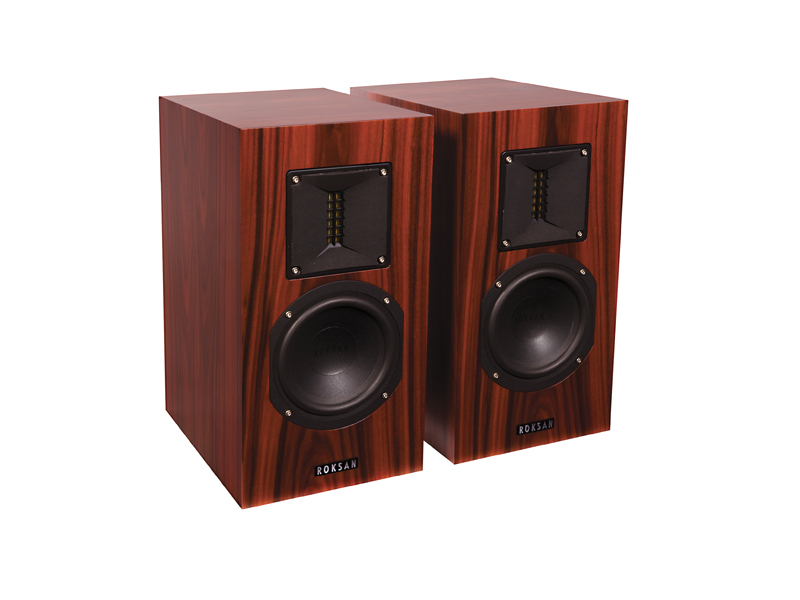TechRadar Verdict
Delivers a sweet top end from its ribbon tweeter, but overall tonal balance is rather uneven
Pros
- +
Beautiful cabinetwork
- +
Good imaging and a sweet top end
Cons
- -
Lacks basic neutrality, so results can be difficult to predict
Why you can trust TechRadar
Roksan's fine reputation has been built largely off the back of its fine turntables and electronics, though several interesting loudspeaker designs have also put in an occasional appearance.
The fine floorstanding Caspian FR-5 was very well received when it arrived in 2006 and the obvious question for this review is whether this Kandy K2 TR-5 can repeat the same trick.
The K2 Kandys are Roksan's recently introduced and least costly range of components, and while the official price of this TR-5 varies from £895 (high-gloss black) to £945 (the beautifully finished satin rosewood of our samples), substantial discounts are available if other Kandy K2 electronics are purchased at the same time. Besides those two options, the speaker is available in silver, maple and metallic black.
This small, two-way standmount uses a rear-port-loaded 130- millimetre bass/mid driver with a 100mm doped paper cone and a concave dust cover. The tweeter, unusually, is a ribbon device – a type of transducer where the 'voice coil' is replaced by a vertical 1x5-centimtere conductive strip (the ribbon) operating in a powerful magnetic field, so that the 'voice coil' and diaphragm are one and the same.
This ribbon diaphragm is well protected behind moulded strips and set down a shallow waveguide. These are mounted in a tough little double cavity enclosure using 15mm MDF panels with additional internal bracing.
Twin terminal pairs separately feed the individual drivers and their associated high-quality crossover components, which include air-core inductors and metallised polyester capacitors. The optional grill is retained by concealed magnets.
Audio Kandy
One of the difficulties of conducting blind tests on loudspeakers comes in trying to equalise perceived loudness between successive presentations. This is not a problem when all the speakers being reviewed deliver something close to a flat response, but it's very difficult when the tonal balance is uneven, as with this Roksan model.
One tends to use the presence band to try and set the level subjectively, but in this case the presence is rather restrained, while the upper mid is rather forward. Setting the level by the perceived presence level, therefore inevitably leads to some voice over-projection that can be quite seductive. Which probably explains why the TR-5 was received quite well by the listening panel.
Despite – and indeed probably partly because of – its departures from true neutrality, listeners found the sound lively, vigorous and "bouncy", albeit with some 'cupped hands' midband coloration. The imaging attracted particular praise, as did the top-end smoothness and sweetness.
While some listeners correctly identified and were critical of the balance imperfections, others seemed quite happy with the rather different presentation, appreciating the full-bodied character, the good sense of scale, and a decently wide dynamic range.
The TR-5 is not an easy speaker to sum up. It's unquestionably a very pretty little unit with top class cabinet work and the use of a ribbon tweeter adds a genuine touch of class. While some members of the panel welcomed its particular character, the lack of genuine neutrality remains an impediment to formal commendation.
Follow TechRadar Reviews on Twitter: http://twitter.com/techradarreview
